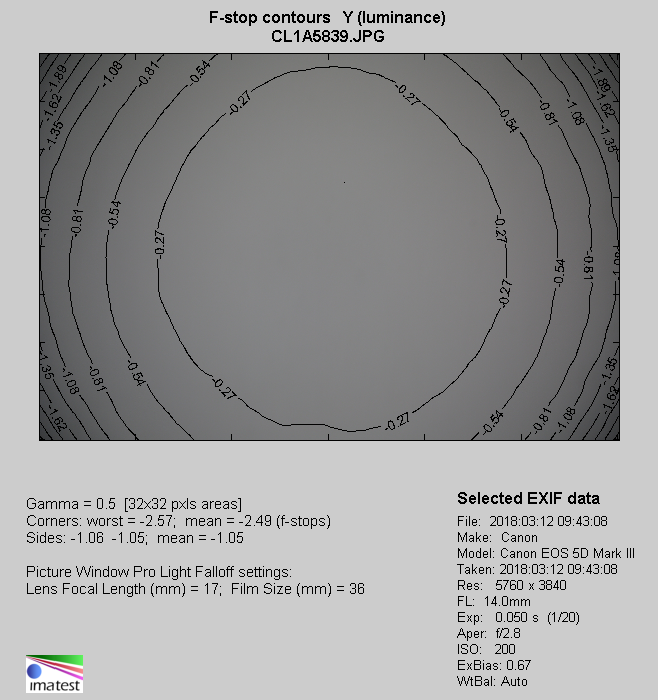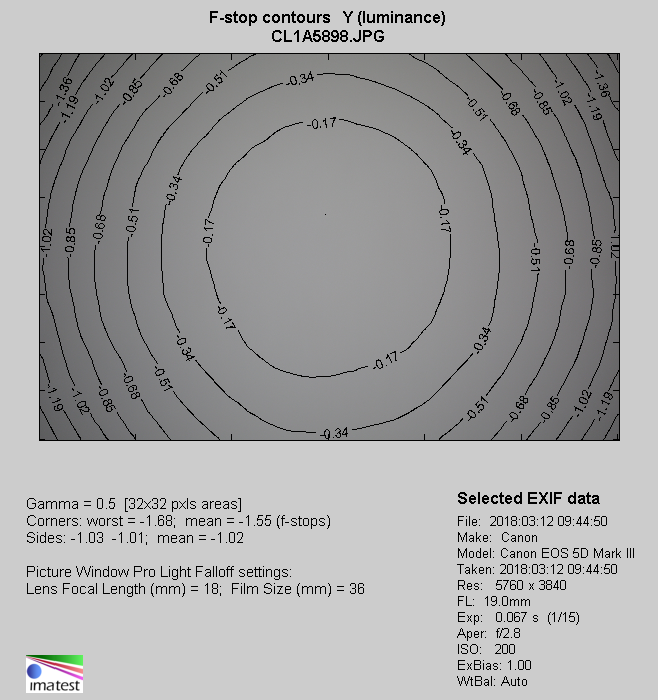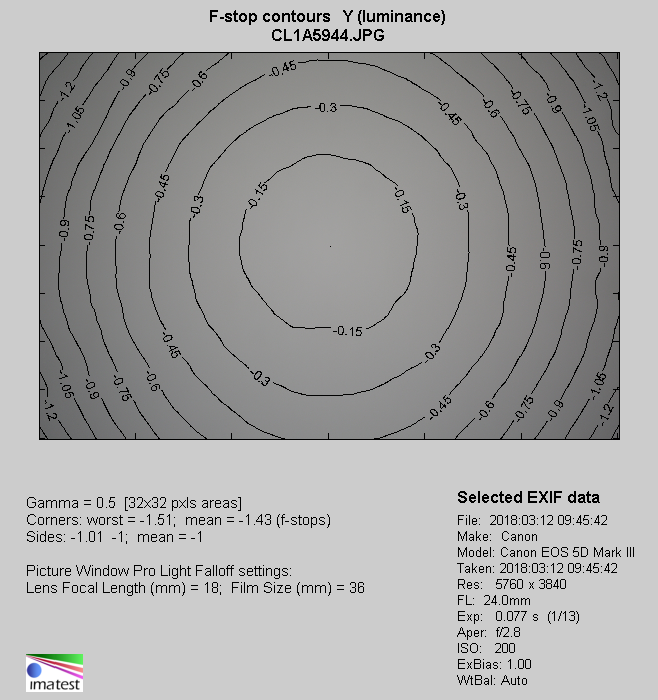Sigma A 14-24 mm f/2.8 DG HSM
8. Vignetting
| Canon 50D, 14 mm, f/2.8 | Canon 50D, 14 mm, f/4.0 |

|

|
| Canon 50D, 19 mm, f/2.8 | Canon 50D, 19 mm, f/4.0 |

|

|
| Canon 50D, 24 mm, f/2.8 | Canon 50D, 24 mm, f/4.0 |

|

|
The short focal length is usually the biggest challenge at that point but it must be said the Sigma manages really fine. Slight light fall-off can be noticed only by f/2.8 where we measured its level as just 16% (−0.52 EV). The aberration disappears completely already by f/4.0, where we officially got 7% (−0.21 EV).
Please Support UsIf you enjoy our reviews and articles, and you want us to continue our work please, support our website by donating through PayPal. The funds are going to be used for paying our editorial team, renting servers, and equipping our testing studio; only that way we will be able to continue providing you interesting content for free. |
- - - - - - - - - - - - - - - - - - - - - - - - - - - - - - - - - - - - - - - - - - - - - - - -
In the middle of the focal range the situation is very similar indeed. By f/2.8 the vignetting amounts to 18% (−0.59 EV) and it decreases to just 6% (−0.17 EV) on stopping down the aperture to f/4.0.
At the maximum focal length and by the maximum relative aperture the brightness loss in the frame corners is 20% (−0.65 EV). Still already by f/4.0 the problem gets marginalized as the vignetting reaches just 6% (−0.18 EV).
Now let’s check the situation with the tested Sigma attached to the full frame Canon EOS 5D Mark III – appropriate thumbnails are shown below.
| Canon 5D III, 14 mm, f/2.8 | Canon 5D III, 14 mm, f/4.0 |

|

|
| Canon 5D III, 19 mm, f/2.8 | Canon 5D III, 19 mm, f/4.0 |

|

|
| Canon 5D III, 24 mm, f/2.8 | Canon 5D III, 24 mm, f/4.0 |

|

|
At the very difficult combination of the 14 mm focal length and f/2.8 aperture the vignetting reaches a high value of 58% (−2.49 EV), a result noticeably worse than 46% shown by the Tamron 15–30 mm at 15 mm. Still you should remember that the Tamron offers you a slightly narrower angle of view so its task as a bit easier. By f/4.0 the vignetting decreases to a still significant value of 36% (−1.31 EV), and by f/5.6 it is already 32% (−1.11 EV). You can speak about a moderate level of that aberration only by f/8.0 and f/11, where we got the following results: 28% (−0.97 EV) and 23% (−0.78 EV). By f/16 the vignetting decreases even further to 17% (−0.55 EV).
A bit better situation can be seen in the middle of the focal range, where vignetting at the maximum relative aperture amounts to 42% (−1.55 EV) and then it decreases to 20% (−0.63 EV) on stopping down the aperture to f/4.0. By f/5.6 and f/8.0 the vignetting becomes practically imperceptible, reaching just 11% (−0.33 EV) and 10% (−0.31 EV) respectively.
Even better results you can observe at the maximum focal length. By f/2.8 the brightness loss in the frame corners amounts to 39% (−1.43 EV) and it decreases to 19% (−0.59 EV) on stopping down the aperture to f/4.0. By f/5.6 the vignetting stops being bothersome at all because it reaches just 9% (−0.27 EV).
| Canon 5D Mk III, 14 mm, f/2.8 |
 |
| Canon 5D Mk III, 19 mm, f/2.8 |
 |
| Canon 5D Mk III, 24 mm, f/2.8 |
 |






